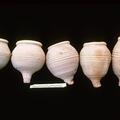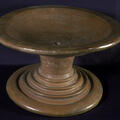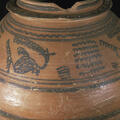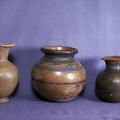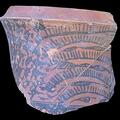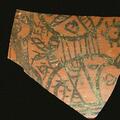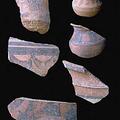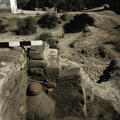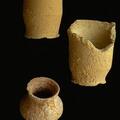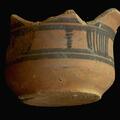Pointed base goblets
The pointed base results from rapid manufacture off a fast wheel and makes it easy for stacking in the kiln. The grooves around the body may serve as a simple decoration, but they also allow for a better grip.
Found only in the largest cities and

